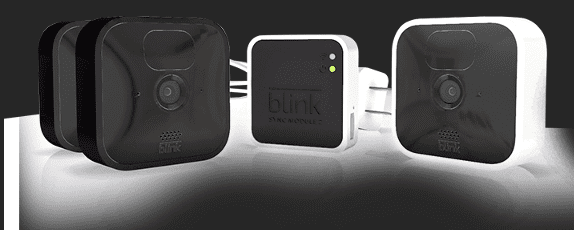The increased prevalence of home security systems has made it easier to keep an eye on our homes. Unfortunately, the technology could be better, but users may still experience some issues. One common problem many users of Blink cameras have encountered is the camera’s tendency to malfunction or not respond appropriately.
Problem 1: Battery Life
As technology advances, so do the devices that control and monitor our lives. The Blink camera is a popular home device to provide security and peace of mind. Unfortunately, users of Blink cameras have experienced issues with battery life. This problem has left many users feeling frustrated and anxious about their home security.
Blink camera users have reported needing to charge their batteries more frequently than promised by the manufacturer. This issue has become increasingly common since the release of the latest camera version, which was intended to improve battery life but instead appears to be draining it quickly. Depending on usage level, some users sometimes have to recharge their cameras every few weeks or less.
The recent complaints about battery life on blink cameras concern current and potential customers who rely on this device for home security purposes.
Problem 2: Range Issues
False Alarm problem in blink camera is a common issue many users face. This problem arises when the motion sensors installed in the camera
detect false movements, unintentionally triggering unnecessary alarms. The most common causes of this issue are insects, animals, and objects that move around in the vicinity of the camera. It can be incredibly frustrating for users to continuously receive false alarms from their blink cameras as it distracts them from more important activities.
Fortunately, there are some ways to avoid this problem. Users should adjust the motion-sensing settings on their blink cameras so that they will detect only certain types of motions. Furthermore, they should also consider installing additional lighting near their cameras so that any small movements aren’t misread as significant ones by the sensors.
Problem 3: False Alarms
False Alarm problem in blink camera is a common issue many users face. This problem arises when the motion sensors installed in the camera detect false movements, unintentionally triggering unnecessary alarms. The most common causes of this issue are insects, animals, and objects that move around in the vicinity of the camera. It can be incredibly frustrating for users to continuously receive false alarms from their blink cameras as it distracts them from more important activities.
Fortunately, there are some ways to avoid this problem. Users should adjust the motion sensing settings on their blink cameras to detect only certain types of motions. Furthermore, they should also consider installing additional lighting near their cameras so that any small movements aren’t misread as significant ones by the sensors.
Problem 4: Motion Detection Issues
Motion detection is a crucial feature of blink cameras that can monitor and record activity in any given space. Unfortunately, some common issues with motion detection on blink cameras can lead to missed recordings or false alarms. These issues include sensitivity settings, camera placement, lens obstructions, and lighting conditions.
Regarding sensitivity settings on blink cameras, most users find the default setting too sensitive and recording too many false positives. To remedy this issue, users should adjust their motion detection settings to only trigger when large objects move across the field of view. When it comes to placement, it’s essential to ensure the camera is placed away from heat sources, as they can cause false triggers due to thermal changes in the environment.
Problem 5: Power Outages
Power outages can be a significant issue for Blink camera owners. The
cameras are designed to run on battery power, which means they need a reliable source of electricity to stay active and recording. Unfortunately, many users have encountered problems with their cameras going offline when the power goes out.
This is a huge problem in areas that experience frequent or intense storms and other weather events that cause power outages. The cameras can record footage with a functioning power supply once the power is restored. In some cases, this could mean missing necessary evidence of theft or vandalism if it occurs during the outage period.
Several ways Blink camera owners can try to solve this problem. Installing backup batteries and generators and ensuring all connections are secure can help mitigate any potential issues caused by a loss of electricity.
Solution Overview
Troubleshooting issues with your Blink camera doesn’t have to be a stressful experience. With a few simple steps, you can resolve any technical problems quickly and easily.
- First, check the power source for your camera. Ensure it is plugged in correctly and the power cord is not damaged or frayed.
- If everything appears in working order, try resetting your camera by holding the reset button for 10 seconds. This should restore the default settings and solve most issues.
- Double-check that your camera is connected to the correct Wi-Fi network if this does not work.
- To do this, press and hold the sync button for 10 seconds until it flashes green twice, then release it. This will prompt you to enter your Wi-Fi credentials so that your Blink camera can connect to the internet properly.
Conclusion
The Blink camera is an excellent tool for home security, and it’s common to experience some problems with the device. Fortunately, most of the difficulties experienced can be resolved through troubleshooting and updating the software. Contact customer support immediately if you ever encounter a problem with your Blink camera that seems more severe than a minor glitch. They can provide further assistance in resolving any issue you may have.






